|
 Secure Site
Secure Site
|
 |
Archive for the 'Bamboo Chime Clocks' Category
 The beauty and functionality of the Zen Clock/Timer makes it a meditation tool that can actually help you "make time" for meditation in your life. Calm your mind with focus and breathing
Meditation instructor Jim Malloy of St. Petersburg, FL, offers this easy-to-do meditation technique that only requires you to do it once a day for 5 minutes. (It works even better if you give it 20 minutes, twice a day.)
Find a quiet, comfortable place, where you won’t be distracted. Sit with your back straight. Place your hands in a comfortable position. If you please, you can call on God or a “higher power” to help you. Allow your eyes to rest comfortably downward, gazing softly but not focused on anything. Let your breathing become deep and rhythmic. It’s okay to let your attention drift a bit, but stay relaxed. If your eyes become heavy, let them close. Don’t worry about doing it right. You simply want to clear your head, and relax.
Use our unique “Zen Clock” which functions as a Yoga & Meditation Timer. It features a long-resonating acoustic chime that brings your meditation or yoga session to a gradual close, preserving the environment of stillness while also acting as an effective time signal. Our Yoga Timer & Clock can be programmed to chime at the end of the meditation or yoga session or periodically throughout the session as a kind of sonic yantra. The beauty and functionality of the Zen Clock/Timer makes it a meditation tool that can actually help you “make time” for meditation in your life. Bring yourself back to balance.
adapted from Prevention by By Selene Yeager
 The beauty and functionality of the Zen Clock/Timer makes it a meditation tool that can actually help you "make time" for meditation in your life.  The beauty and functionality of the Zen Clock/Timer makes it a meditation tool that can actually help you "make time" for meditation in your life. Bring yourself back to balance. Now & Zen
The Yoga & Meditation Timer Shop
1638 Pearl Street
Boulder, CO 80302
(800) 779-6383
orders@now-zen.com
Posted in Bamboo Chime Clocks, Meditation Timers, Meditation Tools, mindfulness practice
 why meditation works By MAIA SZALAVITZ
The image of the ancient but youthful-looking sage meditating on a mountaintop might be closer to reality than you think, according to a new study that found that after a three-month stay at a meditation retreat, people showed higher levels of an enzyme associated with longevity.
The study is preliminary and didn’t show that meditation actually extends life, but the findings suggest a possible means by which it could.
Researchers led by Tonya Jacobs of the University of California-Davis compared 30 participants at a meditation retreat held at the Shambhala Mountain Center in Colorado with matched controls on a waiting list for the retreat. Participants meditated six hours per day for three months. Their meditation centered on mindfulness — for instance, focusing solely on breathing, in the moment — and on lovingkindness and enhancing compassion towards others. (More on Time.com: Empathy Beats Bullies)
After the three-month intervention, researchers found that the meditators had on average about 30%* more activity of the enzyme telomerase than the controls did. Telomerase is responsible for repairing telomeres, the structures located on the ends chromosomes, which, like the plastic aglets at the tips of shoelaces, prevent the chromosome from unraveling. Each time a cell reproduces, its telomeres become shorter and less effective at protecting the chromosome — this, researchers believe, is a cause of aging. As the chromosome becomes more and more vulnerable, cell copying becomes sloppier and eventually stops when the telomeres disintegrate completely. Telomerase can mitigate — and possibly stop — cell aging.
“Something about being on a retreat for three months changed the [amount of] telomerase in the retreat group,” says Elizabeth Blackburn, a study author who has won a Nobel Prize for her previous work on telomerase. “We didn’t prove that it was meditation [that caused the change]. A lot of things happened during the retreat. But the interesting thing was that the changes we saw tracked quantifiably with the change in people’s psychological well-being and outlook.”
 meditating on a rock In other words, people with higher levels of telomerase also showed more increases in psychological improvement. In retreat participants who showed no psychological change, telomerase levels were not any higher than in controls. (Researchers were unable to compare telomerase levels in the groups both before and after the retreat for logistical reasons.)
“It’s a very good study with interesting results in terms of health implications,” says Alan Marlatt, a professor of psychology at the University of Washington who has studied meditation for decades but was not associated with this research.
Of course, the relationship between health and telomerase is complex. In a recent study in mice by Harvard researchers, they found that boosting levels of telomerase reversed signs of aging, restoring graying fur and fertility, increasing brain size and sharpening scent perception. Too much telomerase activity can also be a problem, however. A cell that reproduces endlessly sounds like a good thing at first — that cell would be immortal. But this is exactly what happens with cancer cells — infinite replication. “If telomerase levels go too far up, that’s [associated with] cancer,” says Clifford Saron, associate research scientist at the University of California-Davis Center for Mind and Brain and a co-author of the new paper. He notes, however, that the difference is one that is orders of magnitude higher—so that meditation could not possibly cause cancer*.
 Woman meditating on the beach at sunset So how does meditation affect the machinery of cellular reproduction? Probably by reducing stress, research suggests. Severe psychological stress — particularly early in life and in the absence of social support — has been linked with poorer health, increasing risk for heart disease, stroke and some cancers. This is likely due to the negative effects of high levels of stress hormones on the brain and body. By reducing stress hormones, perhaps meditation contributes to healthier telomeres.
In a study published a few years ago in Lancet Oncology, researchers compared 30 men before and after adopting lifestyle changes following a diagnosis of low-risk prostate cancer. The patients started meditating, switched to a healthy plant-based diet, exercised and attended a support group. Like the new study, the Lancet Oncologypaper found increases in telomerase linked with reduced psychological distress.
“The mind has a big influence on the body. If you get anxious, your heart beats faster and your stomach churns,” says Blackburn. “But we don’t know yet [if meditation is linked to] a reduction in stress hormones. The physiology is very complex.”
Recent evidence supports a connection: a study published this month in the Archives of General Psychiatry showed that mindfulness meditation can reduce relapse in patients who recovered from depression just as well as antidepressants.
Of course, the increases in telomerase seen in the current study could be due to some other unknown factor that separates the meditators from the controls. That’s another reason why it’s too early to suggest that stress-reducing mind-body interventions like meditation be prescribed as a treatment for any diseases or disorders. The study also did not show that meditation actually extends life, only that it may increase the activity of an enzyme that is associated with longevity.
Still, research on meditation is expanding dramatically, with studies finding it helpful for pain, depression, addiction and many other conditions. “There’s a very exciting dialogue going on,” Marlatt says of the research. “It works for many different kinds of clinical problems. It’s very promising.”
That noise you hear in the background? Millions of new meditators chanting, “Om.”
adapted from Time Magazine, Dec. 2010
Use our unique “Zen Clock” which functions as a Yoga Timer. It features a long-resonating acoustic chime that brings your meditation or yoga session to a gradual close, preserving the environment of stillness while also acting as an effective time signal. Our Yoga Timer & Clock can be programmed to chime at the end of the meditation or yoga session or periodically throughout the session as a kind of sonic yantra. The beauty and functionality of the Zen Clock/Timer makes it a meditation tool that can actually help you “make time” for meditation in your life. Bring yourself back to balance.
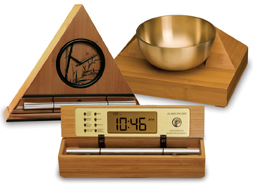 meditation timers with singing bowl chime Now & Zen’s Meditation Timer Store
1638 Pearl Street
Boulder, CO 80302
(800) 779-6383
Posted in Bamboo Chime Clocks, Chime Alarm Clocks, Now & Zen Alarm Clocks, Zen Timepiece by Now & Zen
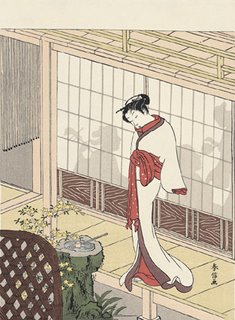 It's exquisite sounds summon your consciousness out of your meditative state with a series of subtle gongs. Once you experience the Zen Timepiece's progressive tones, you'll never want to meditate any other way. Harunobu Suzuki, Beauty at the Veranda Think again! You can channel some Zen with a technique that fits your personality:
We get it. Telling you to meditate is a whole lot easier said than done. Sure, research links it to all kinds of health benefits—stress relief, improved memory, and better blood sugar, to name a few—but that won’t do you much good if your blood pressure spikes just thinking about sitting still for five minutes. The good news is that this doesn’t mean you can’t meditate; you just haven’t found the right fit.
“Everyone can meditate,” says Sarah McLean, a meditation teacher in Sedona, Arizona, and author of Soul Centered: Transform Your Life in 8 Weeks With Meditation (May 2012; Hay House). “Any activity can become a meditative experience if you’re really present in the moment and engage your senses.
How? Simply slowing down and being mindful of what’s happening right now—rather than, say, thinking about what you ate for lunch yesterday or whether you remembered to put your clothes in the dryer—can calm your nervous system, says McLean. You mind will drift, but that doesn’t mean you’re doing it wrong. “It’s like training a puppy,” says McLean. “Stick with it and your mind will settle down.”
 t serves as the perfect meditation timer. Available in 5 wood styles, including bamboo. Here’s how to channel some inner peace with a technique tailored to your personality.
If you’re artsy…light a candle. “Concentrating on a flame can be a good way for visual types to stay in the moment,” says McLean. Sit three feet from a flame at eye level, and watch it closely for five to 10 minutes. Continue to bring your attention back to the flame every time you notice your focus starting to drift away.
If you’re a foodie…savor each bite. Focus on a small morsel, such as a raisin, strawberry, or nut, and notice its shape, size, color, texture, and scent. Place it on your tongue, enjoying the flavor and keeping it in your mouth for as long as you can, at least 20 seconds. Chew slowly. “By turning your focus inward and concentrating on sensations such as taste and smell, eating can feel like a new, exciting experience,” says McLean.
If you’re athletic…take a hike. Try walking for 10 minutes without the iPod. As you stroll (no rushing!), stare at the ground about three feet in front of you. Notice the sound of your breath, focus on the physical sensation of the air on your skin, observe the texture of the ground in front of you. “Over time, walking meditations can train your brain to better focus on the here and now,” McLean says.
The Healing Power Of Mindfulness
If you’re a word lover…find a mantra. Sometimes your mind just needs a place to rest. Repeating calming words can give your mind that opportunity to chill. Find a quiet place and sit with your back straight but not rigid. Set a timer for 10 to 15 minutes, and repeat words that will help settle—rather than stimulate—your mind. Try saying “Let” on an inhale and “go” on an exhale, either out loud or silently to yourself. “It can help interrupt the monologue in your head and naturally settle down your thinking process,” says McLean.
adapted from Prevention, by By Holly C. Corbett
Use our unique “Zen Clock” which functions as a Yoga & Meditation Timer. It features a long-resonating acoustic chime that brings your meditation or yoga session to a gradual close, preserving the environment of stillness while also acting as an effective time signal. Our Yoga Timer & Clock can be programmed to chime at the end of the meditation or yoga session or periodically throughout the session as a kind of sonic yantra. The beauty and functionality of the Zen Clock/Timer makes it a meditation tool that can actually help you “make time” for meditation in your life. Bring yourself back to balance.
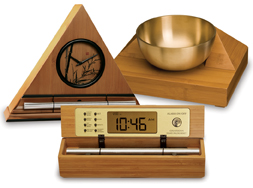 It's exquisite sounds summon your consciousness out of your meditative state with a series of subtle gongs. Now & Zen – The Gong Meditation Timer
1638 Pearl Street
Boulder, CO 80302
(800) 779-6383
Orders@now-zen.com
 The beauty and functionality of the Zen Clock/Timer makes it a meditation tool that can actually help you "make time" for meditation in your life. Bring yourself back to balance.
Posted in Bamboo Chime Clocks
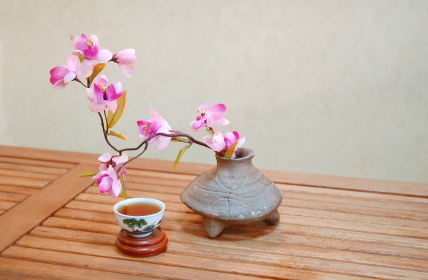 orchid “In the beginner’s mind, there are many possibilities, but in the expert’s mind there are few.”
-Zen Master Suzuki Roshi
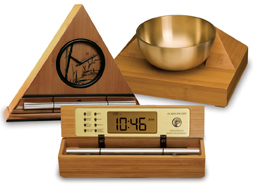 Mindfulness tools for your stillness practice Now & Zen
1638 Pearl Street
Boulder, CO 80302
(800) 779-6383
Posted in Bamboo Chime Clocks
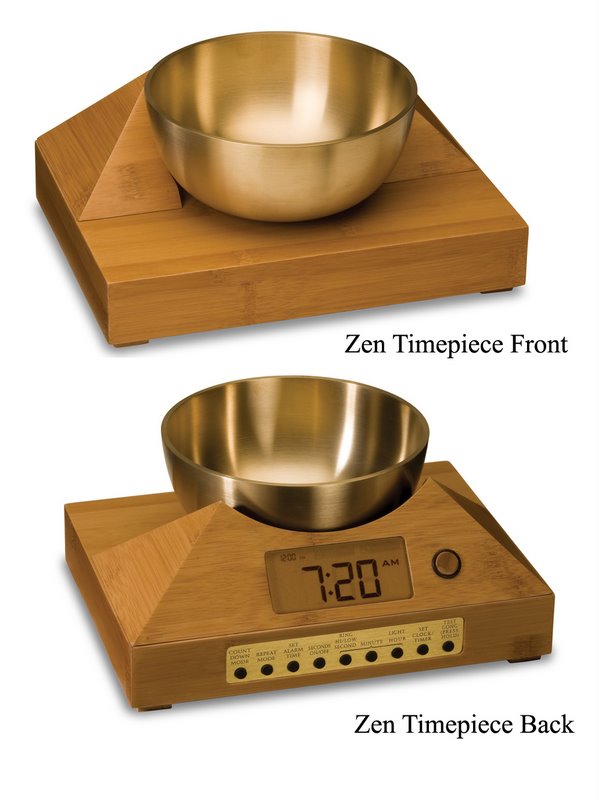 Zen Timepiece for Meditation and Yoga by Shyalpa Tenzin Rinpoche
As beginners, we must embrace the practice of meditation. Even if the discipline of meditation does not come easily, we should endeavor to practice. We have to tame our neuroses and pacify our restless minds.
 Meditation Now & Zen
1638 Pearl St.
Boulder, CO 80302
(800) 779-6383
Posted in Bamboo Chime Clocks
 It's exquisite sounds summon your consciousness out of your meditative state with a series of subtle gongs. Entrepreneurs behave just like most Americans when it come to religion — but with one spiritual twist.
They’re significantly more likely to pray several times a day or to meditate, says sociologist Kevin Dougherty, a co-author of the Baylor Religion Survey.
The survey can’t answer whether prayerful, peaceful folks are more likely to take a business risk or whether the stress of a start-up drives folks to their knees or to the lotus position, Dougherty says.
Questions on entrepreneurs were a part of the survey underwritten by Baylor’s sociology department, the National Study of Religion and Entrepreneurial Behavior and the National Science Foundation.
Either way, 34% of entrepreneurs say they frequently look up to the Lord, compared with 27% of non-entrepreneurs. Nearly as many, 32%, say they look inward in meditation while just 22% non-entrepreneurs say they practice any of the eight forms of mediation, including Christian, Jewish and Buddhist variations, on the survey.
Leading the way: Christian meditation, reported by 18% of entrepreneurs.
Leah Rampy of McLean, Va., who ran her own company as an executive leadership coach, says her prayers were often that “the spirit would work through me.”
Mindful meditation, was cited by 17% of entrepreneurs. Wendy Woods, a consultant based in Toronto shares with her corporate clients how “meditation helps me push away fear and bring in calm and creativity.”
Buddhist meditation worked for Ray Yeh, of Ukiah, Calif., who created and ran a software sales company for 20 years. He found “working 12 hours a day, seven days a week leaves you no time to think, to get in touch with your inner self.” Yeh sold the company in 1999 and now lives in a Buddhist monastery in Northern California.
Psychologist Kenneth Pargament, scholar in residence at the Institute for Spirituality and Health at the Texas Medical Center in Houston, says, “Entrepreneurs have a strong sense they can take matters into their own hands. But they also face risk, unpredictability and uncertainty. Prayer and meditation can be important resources for people who are trying to achieve a lot and yet still face the reality that there is only so much they can control.”
Although meditation can be done in almost any context, practitioners usually employ a quiet, tranquil space, a meditation cushion or bench, and some kind of timing device to time the meditation session. Ideally, the more these accoutrements can be integrated the better. Thus, it is conducive to a satisfying meditation practice to have a timer or clock that is tranquil and beautiful. Using a kitchen timer or beeper watch is less than ideal.
And it was with these considerations in mind that we designed our digital Zen Alarm Clock and practice timer. This unique “Zen Clock” features a long-resonating acoustic chime that brings the meditation session to a gradual close, preserving the environment of stillness while also acting as an effective time signal.
adapted from abcnews.go.com
 Our Yoga and Meditation Timer & Clock can be programmed to chime at the end of the meditation or yoga session or periodically throughout the session as a kind of sonic yantra Now & Zen – The Meditation Timers Shop
1638 Pearl Street
Boulder, CO 80302
(800) 779-6383
orders@now-zen.com
Posted in Bamboo Chime Clocks, Meditation Timers, Meditation Tools, mindfulness practice
 Zen Timepiece with Singing Bowl The basic practice of focusing attention is important, even for the most advanced practitioners. If you allow a glass full of muddy water to sit undisturbed, the dirt will settle to the bottom, leaving a glass of pure water. Practicing this simple technique of focusing and restoring your attention when your mind wanders will pacify your restless thoughts. It will calm your mind, and with sustained practice, you will experience lucidity and pure presence. Using a Zen Timepiece with Singing Bowl will help your body relax when you hear the chime indicating a close to your mindfulness practice.
 Cherry blossoms Now & Zen Headquarter Store
1638 Pearl Street
Boulder, CO 80302
(800) 779-6383
Posted in Bamboo Chime Clocks
 One of the ultimate Zen like experiences is waking-up from a great slumber refreshed and energized. Your mind and body are harmoniously one, both alert and focused. Having a refreshed mind and body are two keys to a natural and Zen lifestyle. Getting too little sleep can make you hungrier than normal and may lead to weight gain, a small study suggests.
The team at Uppsala University in Sweden used functional MRI to observe the brains of 12 normal weight males while they looked at images of food. This was done on two occasions — after a night of normal sleep and after a night without sleep.
The results showed that a specific brain region that plays a role in appetite shows more activation in response to food images after a night without sleep than after a night of normal sleep.
This suggests that poor sleep habits can affect a person’s risk of becoming overweight in the long run, according to the study published online Jan. 18 in the Journal of Clinical Endocrinology and Metabolism.
“After a night of total sleep loss, these males showed a high level of activation in an area of the brain that is involved in a desire to eat,” researcher Christian Benedict said in a university news release.
“Bearing in mind that insufficient sleep is a growing problem in modern society, our results may explain why poor sleep habits can affect people’s risk to gain weight in the long run. It may therefore be important to sleep about eight hours every night to maintain a stable and healthy body weight,” Benedict added.
 Waking up in the morning should be as pleasant as falling asleep at night. The Zen Alarm Clock's gradual, gentle awakening is transformative. More information
The U.S. Centers for Disease Control and Prevention has more aboutpreventing weight gain.
– Robert Preidt
SOURCE: Uppsala University, news release, Jan. 18, 2012
One of the ultimate Zen like experiences is waking-up from a great slumber refreshed and energized. Your mind and body are harmoniously one, both alert and focused. Having a refreshed mind and body are two keys to a natural and Zen lifestyle. Waking up in the morning should not be a loud and abrupt awakening, but rather it should be a peaceful positive experience. The right natural alarm clock can transition your deep and tranquil sleep into a serene start to consciousness. Imagine a long-resonating Tibetan bell-like chime waking you up to a beautiful morning experience.
The right alarm clock can be the most beneficial investment for you. With our Now & Zen natural alarm clock you are awakened more gradually and thus more naturally. Now & Zen is focused on creating a naturalistic lifestyle, and our clocks are an example of our philosophy.
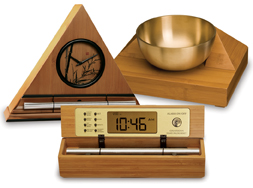 Wake up refreshed, love your alarm clock, transform your mornings with The Zen Alarm Clock's progressive awakening with gentle chimes. Now & Zen – The Acoustic Chime Alarm Clock Store
1638 Pearl Street
Boulder, CO 80302
(800) 779-6383
orders@now-zen.com
Posted in Bamboo Chime Clocks
 Choki Eishosai, Sunrise at New Year By approaching the night sky with fresh eyes, you become more intimate with the world.
Starry Night
When we spend time in the wilderness, it can be tempting to focus our awareness on “doing” something: taking pictures; getting a certain amount of physical exercise; traveling from point A to point B; naming all the species of birds we encounter. While nature photography is a lovely craft, and we need to exercise for good health, and understanding what lives in our environment is a valid part of deepening our relationship with the land, these activities can separate us from a more intimate experience of the natural world. It is all too easy to forget to actually experience with all our senses that which we are busily capturing and identifying.
The natural world invites us out of our world of fixed concepts and into a closer proximity with reality—what Buddhist teachings call “nonconceptual awareness.” Experiencing the natural world with nonconceptual awareness means that, rather than seeing a [small] black bird and thinking, “That’s a starling, a nonnative bird introduced from England several centuries ago,” we stop and see each particular bird’s incandescent blue-black velvet feathers, piercing amber eyes, and delicate, wiry feet. Instead of encountering the world through a filter of ideas, memories, and labels, we connect deeply with the unfiltered and vital pulse of life in that moment.
If we’re not mindful, intellectual knowledge can easily cloud our direct experience. When we’re guided through life solely by our intellect, by our ideas of what we know, we’re robbed of a sense of discovery. A nonconceptual awareness allows us to approach each moment as fresh and new. A depth of wisdom can arise from such immediacy, and lead to greater wonder about the mysteriousness of life; we may realize just how little we can ever know.
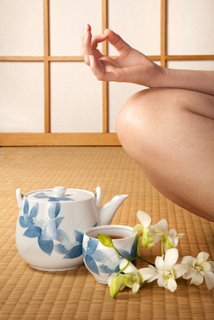 The beauty and functionality of the Zen Clock/Timer makes it a meditation tool that can actually help you "make time" for meditation in your life. Bring yourself back to balance. Whatever we experience most often provides us with an excellent opportunity to cultivate nonconceptual awareness. My garden sits in the shade of an old California oak tree that has a wide trunk, deeply veined and wrinkled. The gray-brown bark has deep, dark, vertical grooves intersected by thinner lateral lines——on some days it looks to me like a lopsided checkerboard. Where limbs once grew, there are large knots on the trunk the size of dinner plates. The tree curves gracefully skyward, supporting branches laden with young, shiny, dark green leaves holding their palms to the sun.
When I look at this oak without any preconceived ideas, it is a “different” tree each time I encounter it. My awareness or mood may be slightly different, altering how I see it. Depending on the time of day or time of year, shifting light changes its color. Gentle breezes and strong winds bend the tender limbs into different shapes. From this perspective I forever see it anew. Instead of relating to it solely through a static concept of “oak tree” or failing to see it in all its living, breathing aliveness, I can take it in with fresh eyes. This tree is my constant mindfulness companion, mirroring to me how present and open I am to the freshness of the moment.
The challenge is to be present to all of our experience with such wakefulness. Our concepts of time, of good and bad, of right and wrong can easily distort our ability to see the world clearly. Abiding with nonconceptual awareness allows us to observe the natural world, as well as the people and opportunities we encounter, without the lens of our fixed concepts, views, and opinions. Similarly, we can begin to look at ourselves with a fresh perspective in each moment, without any preconceptions or predetermined limitations.
The following meditation is a way to cultivate a nonconceptual awareness. It works best on a relatively clear night, preferably away from bright city lights. Find a place outdoors where you can lie down on the ground and view the night sky. Gaze up at that vast ocean of darkness that sparkles with infinite stars until you find the cluster of stars known as the Big Dipper. Officially part of Ursa Major, the Great Bear constellation, the Big Dipper consists of seven stars broadly spaced apart. Four stars make the shape of a large rectangle, and the other three splay out horizontally to the left from the top of the rectangle, so they resemble a large dipper, or a saucepan with a long and slightly curved handle.
Once you locate this constellation, try to let go of any preconceived ideas you have about it, and look at the cluster of stars without fixating on the shape of a big dipper. Allow yourself to see seven bright dots amid black space. Notice each star individually. Notice the stars in their context in the sky, within the vast field of shining lights. See how the stars are located in relationship to other stars not in this particular constellation. Observe the spaces between each star. As you continue the meditation, notice if you go in and out of being able to see the stars themselves, without the idea or image of the dipper. If in moments you find it difficult to let go of seeing the Big Dipper, shift your focus to other parts of the night sky. Try looking at just part of the constellation, along with other stars outside the constellation.
Close your eyes for a moment, relax your body, and then open your eyes and refresh your attention using a soft gaze. Let your vision be broad and spacious, and look at the stars without thinking about them, yourself, or anything else—just rest in open awareness. Another approach is to stare at the Big Dipper for a long time; after a while, the concept or memory of a dipper may fade and the stars will return to just being individual lights in the sky.
Once you practice this meditation, you can apply the technique to other constellations—seeing the stars without their associated imagery, taking in the simple reality of what is, and experiencing the vastness of the night sky. Try doing this meditation for up to half an hour, taking time to alternate between simply resting your awareness in the vastness of sky, and noticing whether you get caught up in concepts about specific constellations. You can also expand this practice to include other objects and people—you might try looking at a rose bush without the concept of “rose.”
 Our Yoga Timer & Clock can be programmed to chime at the end of the meditation or yoga session or periodically throughout the session as a kind of sonic yantra. The more you do this, the more you’ll begin to see how using only our preconceived concepts to approach the world can limit our experience and our awareness. Simple concepts can in no way describe the fullness and complexity of any experience or thing, including something as simple as a single, unique maple leaf or mushroom, or something as vast as constellations in the sky.
This technique can also help us approach people with a fresh awareness every time. Try looking at an acquaintance or a loved one without fixing on a preconceived idea about who they are, what they are like, or what they will do. We often get stuck in our concept of who someone is, which limits both people in the relationship.
A dear friend of mine sits his teenage daughter down every year, and they do a playful exercise in which they look at each other, and he says, “I am not your father,” and she says, “I am not your daughter.” This attempt to break down the narrowness of the concepts of “father” and “daughter” allows them to see each other more completely as people, rather than seeing only the parts of each other that relate to the roles they know each other in.
So when you look at someone, notice what concepts arise about them—man, woman, parent, child, waitress, taxi driver, lover. See how your approach to them changes based on your ideas of what it means to be old, young, sick, cute, shy, loud, extroverted, or smart. See then if you can let go of the labels and look at them without these concepts interfering with your perceptions of who they are. Notice their form, movements, and expressions, and try to get a sense of their essence beyond their surface appearance, movements, and expressions. When we look at people or anything in this way, we get to see the world anew, with fresh eyes. We come closer to experiencing the truth of how things actually are, undimmed by the concepts in our minds.
 Our Yoga Timer & Clock can be programmed to chime at the end of the meditation or yoga session or periodically throughout the session as a kind of sonic yantra. Use our unique “Zen Clock” which functions as a Yoga & Meditation Timer. It features a long-resonating acoustic chime that brings your meditation or yoga session to a gradual close, preserving the environment of stillness while also acting as an effective time signal. Our Yoga Timer & Clock can be programmed to chime at the end of the meditation or yoga session or periodically throughout the session as a kind of sonic yantra. The beauty and functionality of the Zen Clock/Timer makes it a meditation tool that can actually help you “make time” for meditation in your life. Bring yourself back to balance.
adapted from yogajournal.com – Excerpted from Awake in the Wild: Mindfulness in Nature as a Path of Self Discovery, by Mark Coleman, with permission from Inner Ocean Publishing. © 2006 by Mark Coleman.
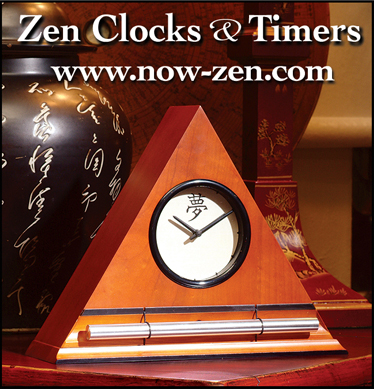 It features a long-resonating acoustic chime that brings your meditation or yoga session to a gradual close, preserving the environment of stillness while also acting as an effective time signal.
Now & Zen – The Meditation Timer Shop
1638 Pearl Street
Boulder, CO 80302
(800) 779-6383
orders@now-zen.com
Posted in Bamboo Chime Clocks, Meditation Timers, Meditation Tools, mindfulness practice
 It's exquisite sounds summon your consciousness out of your meditative state with a series of subtle gongs. Once you experience the Zen Timepiece's progressive tones, you'll never want to meditate any other way. It serves as the perfect meditation timer. Find your inner artist and connect with your spirit.
“The urge to create is inherent in all of us and is an essential component of the human spirit,” Linda Novick writes in The Painting Path: Embodying Spiritual Discovery through Yoga, Brush and Color. Novick, an artist and Kripalu Yoga teacher who leads painting-and-yoga retreats, uses yoga to help her students open to the roots of their creativity.
Tap into your creativity with Nadi Shodhana Pranayama(Alternate-Nostril Breathing), a purifying and balancing technique that leads to a state of deep, receptive calm. The practice can open you to a rush of creativity while quieting your inner critic, says Novick. She offers these instructions in her book and suggests having paper and colored oil pastels or crayons at hand before you begin.
- Sit comfortably with your eyes closed. Gently bring your attention to the natural flow of your breath.
- Lift your right hand and fold your middle and index fingers down, leaving your thumb, ring finger, and pinkie open.
- Close your right nostril with your right thumb. Exhale, and then inhale through your left nostril. Release your right nostril and close your left nostril with your ring finger. Exhale, then inhale through your right nostril. Practice alternate breathing in this manner for several minutes, or until you feel relaxed.
- Slowly open your eyes and take up the oil pastels; draw freely, observing without judgment how it feels to cover the paper with color.
Use our unique “Zen Clock” which functions as a Yoga & Meditation Timer. It features a long-resonating acoustic chime that brings your meditation or yoga session to a gradual close, preserving the environment of stillness while also acting as an effective time signal. Our Yoga Timer & Clock can be programmed to chime at the end of the meditation or yoga session or periodically throughout the session as a kind of sonic yantra. The beauty and functionality of the Zen Clock/Timer makes it a meditation tool that can actually help you “make time” for meditation in your life. Bring yourself back to balance.
adapted from yogajournal.com by Charity Ferreira
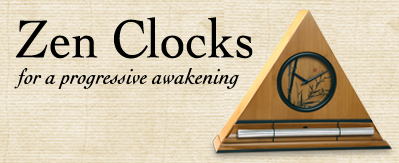 It serves as the perfect meditation timer. Now & Zen – The Meditation Timer Shop
1638 Pearl Street
Boulder, CO 80302
(800) 779-6383
orders@now-zen.com
Posted in Bamboo Chime Clocks, Meditation Timers, Meditation Tools, mindfulness practice
« Previous Page — « Previous Entries
Next Entries » — Next Page »
|
|
|
|